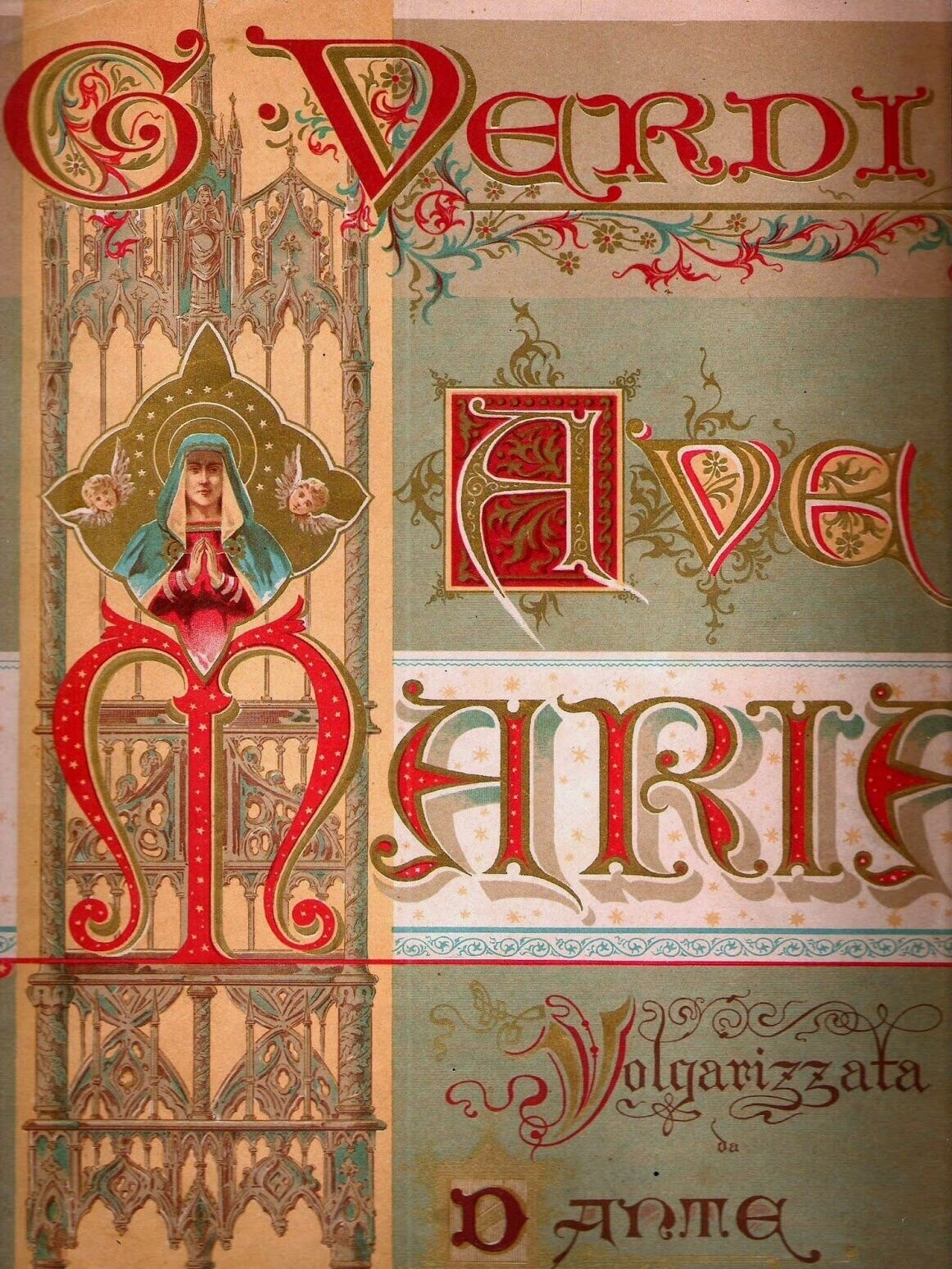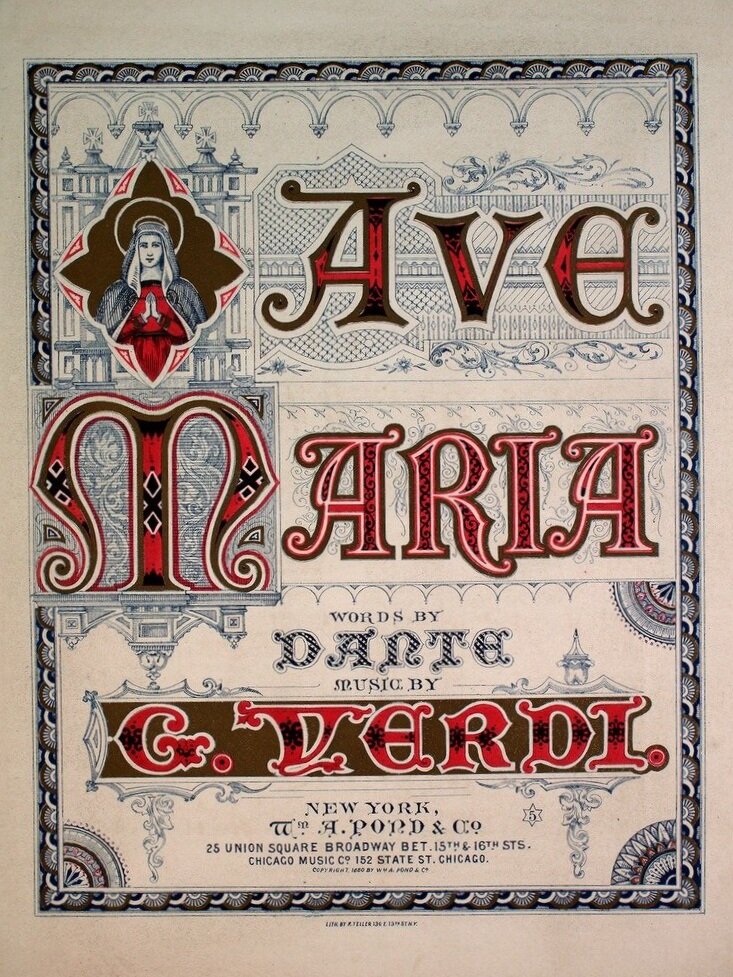Verdi: Ave Maria volgarizzata da Dante (1880)
Christine Lyons and Will Crutchfield
Verdi let everyone think, and may have thought himself, that he had retired from composition after the Requiem in 1874. The long political project of Italy’s unification had been completed; Verdi’s personal project of complete financial independence had been secured with the runaway success of Aida in 1871. He declared to everyone his reluctance to consider new projects - and yet his letters of those years testify to restlessness and dissatisfaction.
Of course he would compose again. He was at the height of his powers at the beginning of his sixties, and had years of extraordinary health left ahead of him. But it was a long climb back to the full activity that culminated in Otello (1887) and Falstaff (1893). A first, small, tentative step back into the arena came with a concert at Milan’s La Scala in April of 1880, dedicated to Italian sacred music.
Three early Ricordi covers
Verdi had been studying Palestrina and other old Italian masters, and campaigning for his compatriots to do likewise (often with a somewhat crotchety objection to the study of Bach and Germans). He wanted to support with a personal example the idea that the way forward lay with immersion in the old, in the roots of Italy’s own traditions: “return to the past, and it will be progress!”
image 3 Teresa Singer, soprano at the 1880 premiere; 1875 Mulnier photograph
So he took a special interest in this program of music by Palestrina, Lotti, Cherubini, Rossini, Bazzini, and - after much ambivalence and vacillation - himself. The two new pieces were an unaccompanied Pater Noster for five-part chorus, and the present Ave Maria. It was published simultaneously in the version for string accompaniment that was sung by Teresa Singer at the Scala and in the present version with piano.
The pieces are small, but what they foretell is immense. The refinement of part-writing, the tonal mobility, the exquisite melodiousness now bestowed on the inner parts of the harmony - all this had seemed, in Aida and the Requiem, to be a culmination of Verdi’s growth. Now he made clear that they were a beginning, a step into new terrain that he would cultivate fully in his last two decades.
For both prayers, Verdi used not the ancient Latin texts but Italian renderings, once thought to be the work of Dante, now understood to be the work of somewhat later poets.
Ave Regina, vergine Maria,
Piena di grazia, Iddio è sempre teco.
Sopra ogni donna benedetta sia.
È 'l frutto del tuo ventre, il qual'io preco,
Che ci guardi dal mal, Cristo Gesù,
Sia benedetto, e noi tiri con seco.
Vergine benedetta, sempre tu
Ora per noi a Dio, che ci perdoni,
E diaci grazia a viver sì quaggiù.
Che 'l Paradiso al nostro fin ci doni.
Hail, Queen, Virgin Mary,
Full of grace, God is with you always.
Above all women be you blessed
and blessed be the fruit of your womb,
Jesus Christ, to whom I pray that he
deliver us from evil, and guide us to Him.
Blessed Virgin, pray always to God for us,
that He pardon us and give us grace
so to live here below that He
might grant us Paradise in the end.



